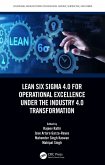Takt is a German word that means the speed or rhythm of something. Takt time is a number that helps make sure that the pace of making pacemakers matches the pace of selling them. One of the most important things to consider in lean manufacturing is takt time. This is the rate at which customers want a certain group of products to be produced by one step in the manufacturing process. Takt time is a number that tells us how much time we have to make each item that the customer wants. Takt time is the time available for manufacturing divided by the number of orders. In the 1930s, the German aviation industry started using Takt as a way to manage production. The concept was used a lot in Toyota during the 1950s, and by the late 1960s, most of the suppliers for Toyota also started using it. Every month, Toyota evaluates the speed of a process, and every 10 days they also do a check to make any necessary changes. Takt time helps make sure that supply and demand are in harmony. This is what makes a lean production system work and function well.
Dieser Download kann aus rechtlichen Gründen nur mit Rechnungsadresse in A, B, CY, CZ, D, DK, EW, E, FIN, F, GR, H, IRL, I, LT, L, LR, M, NL, PL, P, R, S, SLO, SK ausgeliefert werden.









